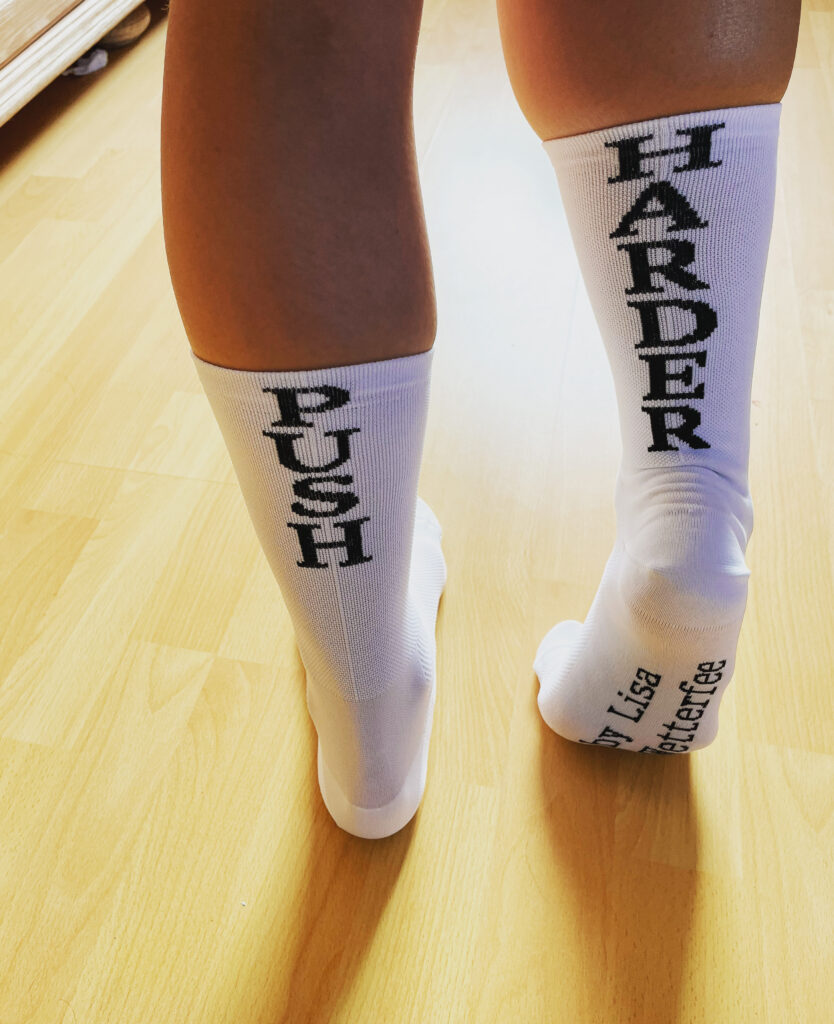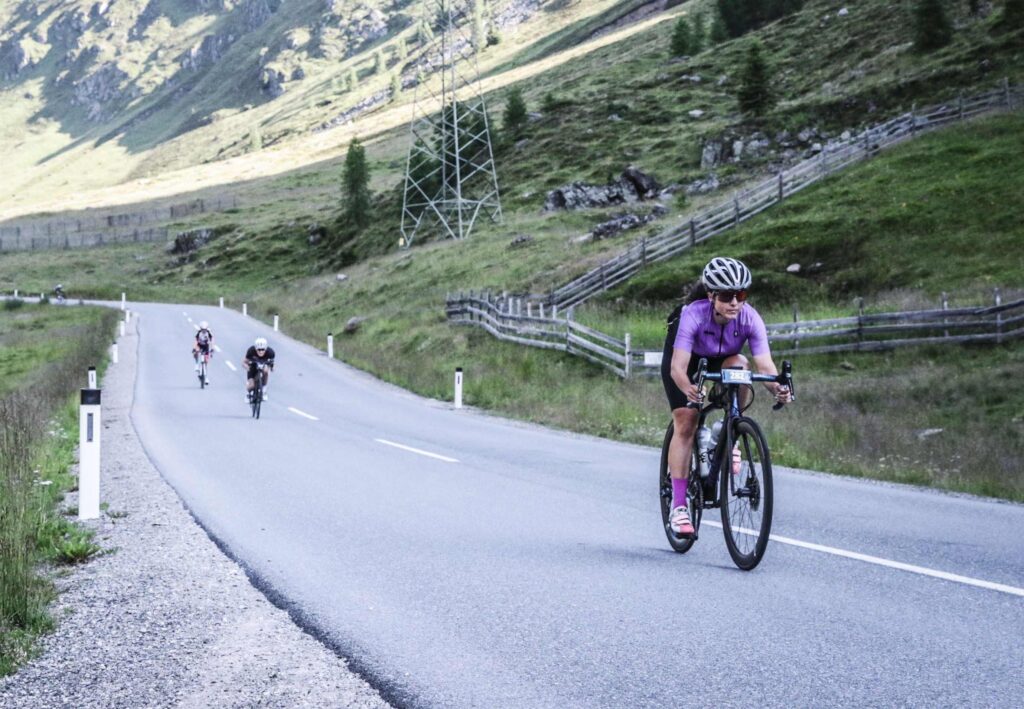How many kilometers and meters of altitude should you have in your legs for the Ötztal Cycling Marathon since the beginning of the year? The answer to this question must probably be answered individually for each cyclist. Can you finish an Ötztaler without specific training? Is a participation without altitude meters and hard intervals possible or reasonable? Is it possible to participate in the Ötztaler bike marathon if someone lacks the time for long rides due to work or family reasons? Are short but regular rides in everyday life sufficient? My personal answer: DEFINITELY YES. As a young mom, I was even able to achieve my personal best time at my 5th Ötztaler Radmarathon.
Everything new makes the May? No! This year it is July that brings something new, at least as far as the Ötztaler Radmarathon is concerned. The race was held on July 9 this year, almost 2 months earlier than usual. July means a higher probability of warm or hot summer weather. After the last years, when the race was held, the probability of snowfall was zero. However, as we experienced this year, heat is not necessarily better. The peak temperatures this year were above the 30 degree mark in St. Leonhard in the Passeier Valley as well as in Sterzing and Innsbruck. On the ascent of the Timmelsjoch, you could have fried eggs on your bike helmet. The Ötztaler Radmarathon 2023 was a real heat battle and every finisher a winner! Hard, harder, Ötztaler!

Welcome to hell
By a hair’s breadth my dream of the Ötztaler would have ended shortly after the start. The downhill from Sölden to Ötz is my fear opponent. And rightly so, as this year clearly showed. Unlike other bike marathons, where there are often traffic jams and stop-and-go phases at the start of the race, the rather shallow descent together with a flying start at the Ötztaler Bike Marathon ensures that the densely packed field of riders disperses after the starting gun with thousands of participants. Nevertheless, this section of the route is accident-prone. I generally ride passively here. A few kilometers from Sölden it happened. I drive on the outer edge of the roadway. A male rider tries to overtake me on the left and touches me in the process. I sway strongly, but can keep my balance. The driver scolds me and shakes his head. He obviously sees the fault with me and will try again in the next race to just overtake others, even if there is actually no road left at the edge to ride on, let alone overtake. I was lucky. Others did not have it this year. Normally, one is never alone in the descent to Ötz. This year, however, there was suddenly around me yawning emptiness. I let a restless group go and then nothing more came from behind. How could that be? The supply of riders who try to win the Ötztaler in this first downhill is usually felt infinite. I look around. As far as my eye can see, there is not a cyclist to be seen. What had happened? I suspected an accident. As it turned out later, I was correct in my guess: a rider trying to take a selfie of himself triggered a crash involving several riders. Again, I lack any understanding for the behavior of the
driver. I made the best of my “break” and ate a bar, since I couldn’t really eat breakfast this year. But even the bar didn’t agree with me. A burning feeling spread in my stomach area, which should accompany me until the end. And suddenly they were there again: the riders who passed me from behind. And suddenly they were there again: the riders who shot past me from behind. I climbed the Kühtai this year in my personal best time. At the Brenner this year I was up to the Stubaital without wind protection of a group. Although I was not alone, but I rode in the wind and behind me a handful of men of which one said that he had to save grains. Everyone has to do that at the Brenner! But if every rider tries to avoid the leading position, then there is no group. I dosed my energy and stayed in the lower GA2-range. For Brenner I reached after a short break of refueling after a good 4 hours. Until the beginning of the Jaufenpass everything pointed to an excellent time of about 9 hours for me, since I had already completed the second part of the race in the past in 5 hours. But it came – as so often – differently. The heat struck mercilessly. I had underestimated how much fluid I had already lost in the first phase of the race. Until Sterzing I felt the summer temperatures as pleasant. Already from Kühtai I could only descend in a jersey – without a jacket or vest – it was so warm. In the summit area of the Jaufenpass I was already extremely thirsty and grateful for the water that was handed to me there (THANK YOU Frank!). Around noon the temperatures were still at a relatively bearable 27 to 28 degrees. The fast riders had a slight advantage. All those who were slower on the road were beaten by the heat. Until about 15 o’clock the thermometer climbed. My subsequent analysis of the maximum values of official measuring stations showed 36 degrees in Merano and even in the higher Passeier Valley at the foot of the Timmelsjoch still 31 degrees in St. Martin. However, with sunlight and the heat radiation from tar and glowing rock walls, the temperatures were much higher for the riders. My bike computer showed 38 degrees. At the same time it was almost windless. 7 hours after the start I saw the first strong riders getting off their bikes. I looked for every bit of shade I could find in the driveway. Every rider was soaking wet with sweat. On some riders the effort with salt drew their marks. I noticed that my thoughts became diffuse. Light dizziness seized me. I quickly realized that I was already dehydrated and the Timmelsjoch was still long. Welcome to the fires of hell. I slowed down my speed. Only one sentence had room in my head: “it’s hot!” All I wanted was to get to the finish line. Then a thought crept up, “I’ll never do that again, that was my last Ötztaler.” But I laughed almost simultaneously and dismissed it. “How stupid of me. They all say that and are at the start again next year”. In the uppermost part of the pass at over 2000 meters it became cooler. I looked at my watch and realized that a personal best time was still achievable. However, that was only if I stepped it up a notch. From this point on I gave everything that was still possible. No words can describe how hard the last minutes of the race were. But the effort was worth it: I was able to bring my fastest Ötztaler to the finish.

As a young mom to the best time
How was best time possible for me? As a young mom, there was no time for long tours. My longest training ride at a stretch lasted 3 hours. Hard hit by COVID-19, my preparation had been limited. The training camp had to be cancelled. The training took place in the flat on the roller and the home Munich Schotterebene. My last pass ride was almost a year ago: the pass ride from the Timmelsjoch at the Ötztaler 2022. Since I had not had a single quiet night for almost two years, my regeneration was severely limited and fatigue was my daily companion. I didn’t do intervals above threshold even once, as the time to recover would have taken many days and disrupted my base training. In fact, even a few hard starts during base runs – such as over highway bridges – hinder positive development in lactate and fat metabolism. I tried to make my little sleep as optimal as possible. I trained my fat metabolism and lactate reduction by occasionally training in a sober state or with exogenous ketones. Now and then there were also two short bike rides in one day, which also work in this direction. Nutrition plays a central role in regeneration. In order to trigger growth or repair in the body and especially in the muscles, the catabolic (degrading) effects caused by exercise and/or lack of energy must be interrupted. The strongest anabolic (building up) hormone in our body is insulin. Insulin has a stronger effect than testosterone, for example. Insulin is secreted by the intake of food with protein and especially carbohydrates. A low carb diet with few carbohydrates is counterproductive to increased performance, especially after training. Quickly available carbohydrates following exercise, on the other hand, are helpful. The targeted intake of certain amino acids can trigger growth processes in the muscle in addition to insulin. But even without insulin action, they cause growth in muscle tissue. Through a combination of these factors, I was able to increase my form. I was not able to reach my personal goal of running under nine hours (which corresponds to a time for men under 8 hours!). So there is still a score to settle! 2024 the Ötztaler Radmarathon will take place again at the beginning of September. Then probably without great heat and hopefully without snow.
_________________________________________________________________



